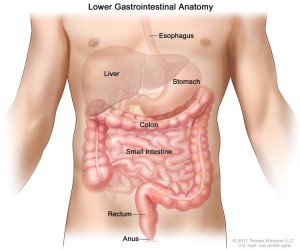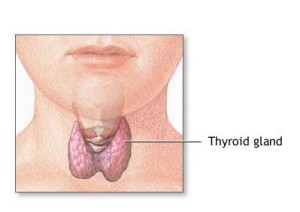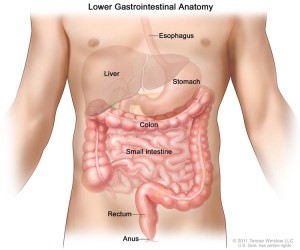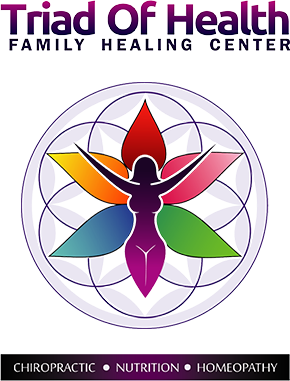One of my patients asked me to write a little bit about the Thyroid gland and Thyroid disorders in a blog post. Thyroid experts such as myself and others are saying that 70% of the population is affected by Thyroid disease – nearly 3/4 of the population. When the request came in from my patient to create this blog post, I realized that while I specialize in Thyroid Dysfunction and helping women with hormonal imbalances, I have not written a lot about the subject directly. So, let’s get right to it.
It would be impossible to cover the vast array of things which affect Thyroid function even in a series of 1000 books each numbering more than 1000 pages. Therefore, rather than to attempt to do this, I thought I would just mention a few causes of Thyroid Dysfunction that present the most number of health challenges to my patients.
Here they are:
1. Poor protein metabolism or inadequate source of protein.
2. Poor water metabolism or inadequate water source (dehydration).
3. Imbalanced blood sugar often due to excessive sugary or starchy foods in the diet.
4. Chronic stress much of which is emotionally based.
5. Poor digestion and immune system health.
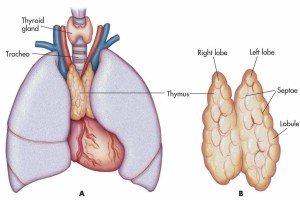
We will talk about many of these causes of Thyroid dysfunction in future Health Tips Email Newsletters.
There are 8 main different types of Thyroid Dysfunction Patterns that have been agreed upon by the medical community. I have treated all 8 types. What is fascinating about these different Thyroid patterns is that ONLY ONE of these Thyroid patterns will respond to medication and yet the patterns are often mismanaged because the only therapy available to most medical practitioners is to give medication. There is a HUGE challenge with categorizing people with Thyroid dysfunction into one of these different types; a person can have more than 1 type of Thyroid dysfunction or none of the different types and STILL have Thyroid disease. People and their health are dynamic and do not necessarily fit into neat little descriptive packages that the medical community has put together for them. This is especially so of Thyroid dysfunction where things will often switch back and forth due to a condition known as Psychological Reversal and Umbilical Reversal. The cause of this is an abnormal conversion of T4 to T3 at the cellular level which requires RNA. Proper brain health is necessary for this conversion of T4 to T3. Thyroid patients never have good brain health because the Thyroid helps to regulate brain function through the myriad of hormones it influences. Changes in calcium levels in the blood dramatically effect a person’s mood. Calcitonin is released from the Thyroid gland – it is primarily responsible for taking Calcium out of the blood and other tissue and depositing it into bone. Thus, osteopenia, osteomalacia and osteoarthritis are directly related to Thyroid function. Dopamine, serotonin, cortisol and ALL of the adrenal hormones work together in order to allow for good health, vitality, sleep, longevity, normal response to stress, healthy weight, mood, etc….
- Hypothyroidism: TSH (Thyroid Stimulation Hormone) levels are high because the Thyroid tissue is dysfunctional. The Thyroid tissue is unable to produce Thyroid hormone normally as it should and so the Pituitary is sending the TSH into the blood in order to tell the Thyroid to make more and more of the Thyroid hormone (T4 and T3). The pituitary is overworking in an attempt to improve Thyroid output. This is the only type of hypothyroidism that will respond well to medication. An auto-immune Thyroid condition such as Hashimotos or Graves should be ruled out here because Thyroid medication will not be helpful with these conditions.
- Hyperthyroidism: TSH levels are low in this condition. This condition may present with a medical emergency if the Thyroid becomes too overactive and then causes the heart to beat too fast (rate) and too strong (cardiac output). Such a pathological heart condition may present with a heart attack and even death. This type of Thyroid dysfunction is common in patients with Graves’ disease which is an auto-immune thyroid condition. The Grave’s patient will normally show positive for Thyroid antibodies – particularly Thyroglobulin antibody. The medical community agrees that these patients may lose Thyroid tissue due to their auto-immune Thyroid condition.
- Secondary Hypothyroidism to Primary Pituitary Hypofunction: This is a pituitary problem that has affected the Thyroid gland. TSH levels tend to be low. Commonly, there are low values for Free T4, Total T4, and Free T3 as well. This patient has been exhausted and burnt out for years. They are often attractive and a little bit pudgy and are sometimes referred to as petite. Often, this patient has been mismanaged for years and nobody ever suspected their pituitary as the cause of their difficulties. There are 4 subclasses of the Pituitary / Thyroid patient.
-
- A compromised Hypothalamic / Pituitary / Thyroid / Adrenal axis with increased cortisol levels. Increased cortisol levels have been shown to interfere with both Pituitary and Thyroid function. High cortisol levels suppress the pituitary and decrease the conversion of T4 to T3 (T4 is inactive Thyroid Hormone and T3 is active Thyroid Hormone). The adrenal gland problem, the gland from which cortisol is derived, needs to be resolved.
-
- A condition may result after a woman has given birth and now she is experiencing post partum symptoms such as depression.
- The patient who was mismanaged and placed on thyroid hormones when they should not have been may develop this pattern of Thyroid dysfunction. Modern doctors may place their patients on Thyroid Hormone to help with symptoms of slow metabolism even though their patient has a normal thyroid blood or saliva panel. This is a big mistake. These modern doctors consider the patient’s condition to be subclinical, and that this explains why the labs are not demonstrating the thyroid dysfunction. This type of patient, when put on medication, may feel better at first. However, after a few months many of these patients will have their Thyroid receptor sites resist the medication and then the Thyroid makes less of its hormone than it did before they were put on the medication, interfering with the pituitary/Thyroid feedback loop.
- Heavy metal toxicity may also cause this pituitary pattern.
4. Thyroid Underconversion: Cortisol levels are often so high that they interfere with the conversion of T4 to T3. Increased lipids in the blood such as HDL, LDL, VLDL and triglycerides may also cause this pattern to arise. Andropause and Menopause are also common factors involved whereby testosterone is converted to estrogen in men and estrogen to testosterone in women due to the down regulation of an enzyme called 5’ deiodinase. This enzyme commonly downregulates due to prior excessive exposure to cortisol.
5. Thyroid Overconversion: TSH and most other Thyroid markers are normal or low normal. Testosterone levels are usually high due to a “Metabolic Syndrome.” Testosterone levels should only be checked using saliva labs as the blood labs that check for testosterone are completely inadequate. This patient often has a very toxic system and is now starting to develop tumors. Their tumors will grow and become healthy because they are being fed by the sugar that the patient eats. Estrogenic and testosterogenic tumors thrive with sugar. In this patient, chronic elevations of insulin will often up regulate an enzyme called 17,20 lyase that converts estrogen to testosterone and vice versa. Remember that “Metabolic Syndrome” is defined as a person whose body is now resisting the effects of insulin due to down regulation of the insulin receptor sites throughout the body as a result of over exposure to insulin. It is common for this patient to be overweight.
6. Thyroid Binding Hormone Elevations: most lab values are normal or low normal. This patient has likely been exposed to exogenous estrogen. What this means, is that there is a good chance they were exposed to xenoestrogens in the environment (plastic containers, drugs, chlorofluorocarbons, etc.). These estrogens are often put into skin care and hair care products without them even saying so on the label. The patient may be using an estrogen or progesterone cream or a vivelle patch or having estrogen enter their system any of a number of ways. One of the most common causes in addition to those just mentioned is contraceptives. Increased estrogen increases thyroid hormone binding that results in a decrease in free T3, T4 and T3 Uptake. The hormone is in the blood but cannot be utilized. This pattern may be found in males or females but is far more common in women.
7. Thyroid Resistence: The labs are all normal. High cortisol levels have caused the down regulation of thyroid alpha 1 and 3 receptor sites. So, what I am saying is that this is primarily an adrenal gland problem and not a Thyroid problem. The Thyroid has been affected, but the cause of the problem is adrenal dysfunction and not Thyroid dysfunction.
8. Iodine-Induced Hyperthyroidism: when high doses of iodine are given to people with an extreme and chronic iodine deficiency, goiters can result and even Grave’s disease may ensue; or, so we are being told by the medical community. However, I have never found this to be the case. I have found nearly the exact opposite. This is a person who may come from the Midwest United States or a central region of Africa where there is very little iodine. They probably have a severe and long standing iodine deficiency. It is this condition that has CAUSED their goiter and Thyroid difficulty and not a high dose of iodine that was recently administered. It may be true that high dose iodine would be contra-indicated in this person, but that does not mean that iodine is what CUASED their condition. Iodine may exacerbate their condition, but it did not cause it. Keep in mind that there are exceptions for every pattern and condition. Health is all about balance and excessive amounts of iodine in the diet can be problematic, but this is very uncommon in the United States. This condition is far more common in Japan. This iodine induced Graves disease is termed the jodbasedow effect. Many Thyroid experts believe that iodized sea salt and over-exposure to potassium iodide may contribute to the jobasedow effect.
Yours in health and life and increased awareness,
Dr. Ilya Skolnikoff, DC, DIBAKChiropractic Kinesiologist
Female Hormone & Thyroid Specialist
(415) 459-4313 Office
(419) 715-9257 Fax
www.triadofhealth.net
www.youtube.com/user/triadofhealth
**** Please note that much of the information in this blog post comes from Dr. Datis Kharrazian’s teachings through Apex Energetics. In particular, his Functional Blood Chemistry Analysis. However, the medical community generally agrees with and reflects all of the information presented by Dr. Kharrazian, DC, MS, FAACP, DACBN, DIBAK, CNS, CCN, CSCS, CCSP.

